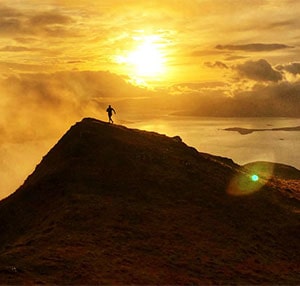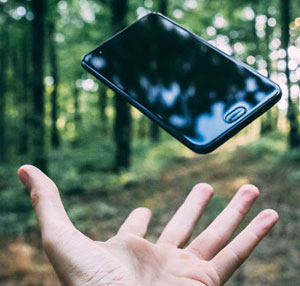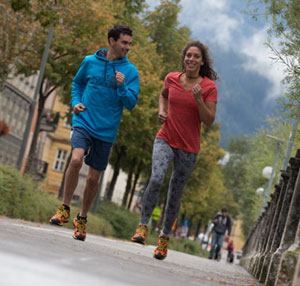How To Improve Your Trail Running Technique
Everybody learns to run as children, chasing friends or a family pet, finding their natural stride for their body shape and size. This technique may change as they grow older and develop more muscles and strength, but it pretty much remains the same unless you actively alter it. Successful trail runners can alter this natural pattern to match the varied terrain they encounter on a trail.
Trail routes have three main features that require special attention. The uphill/downhill sections, uneven surfaces and obstacles. Changing your running technique to complement this terrain is going to help you avoid injuries, achieve faster times and run longer distances.
Training
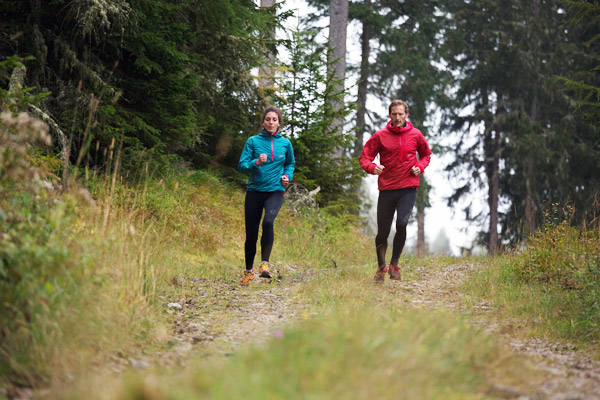
If you are new to trail running, a useful way to train for unpredictable terrain is to practise foot placement between roots and rocks. A flat route through a park is good for this. Try to focus your eyes on the open spaces, not the obstacles, and your feet should naturally be drawn to those areas.
This practice on gentle paths is going get you used to running trails. Then, when you transition to steeper more technical trails, you should have no fear of the unknown, a reduced risk of injury (twisting an ankle) and be able to remain relaxed. A tense body and stiff joints increases the amount of shock your knees and hips have to absorb and reduces your ability to react to slips.
Yoga is an excellent way to improve your core muscles, flexibility and balance. The core muscles look after your posture which in turn helps you to breathe properly. Greater flexibility and balance is going to help you avoid roots and rocks and if you do slip you will have more chance of recovering your footing.
Gym work should focus on high reps of low weights, increasing your strength without adding bulk. Resistance band exercises around your ankles and knees are going to help protect your joints, ligaments and tendons which contribute to holding all the components together when put under stress.
Mix in loops of short trails into your training rather than just long runs. It gives you a chance to focus on technique, breathing and mental toughness over familiar terrain.
Pre-run
A short jog to get the blood flowing followed by dynamic stretches is going to prepare your body for the upcoming challenge, reduce the chance of injury and enhance your performance.
Flat technique
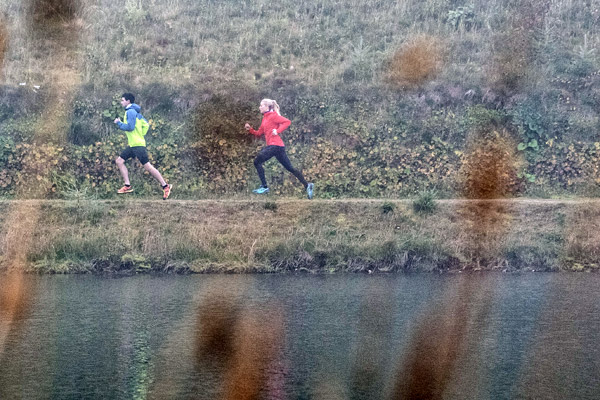
- Posture: hold your head up with your shoulders back/relaxed; it helps with breathing. Gently pump your arms and hands in a pendulum motion parallel to your body not across it; wasting energy. And your elbows should sit comfortably next to your torso.
- Stride pattern: transitioning from road to trail - shortening your strides to place your feet nearer your body enables you to react quicker.
Uphill technique
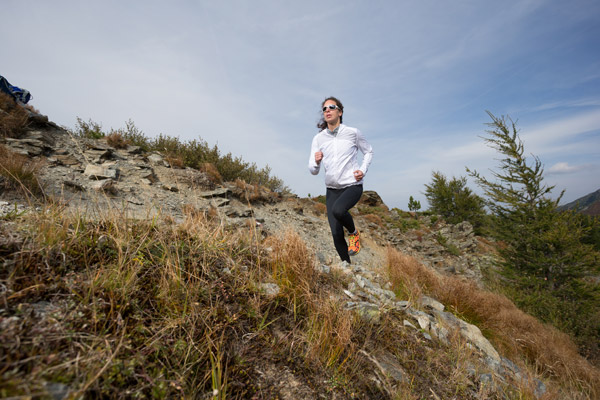
- Take small steps: the steeper the slope, the smaller the steps. This helps you keep a good rhythm and stops you from getting overly tired. Think of it as a low gear on a bike, you pedal lots, but you always make it to the top of the hill.
- Posture: a neutral pelvis, engaged core and straight spine/neck will help you breathe in more air and place your legs in an effective position to drive your body upwards. It may be tempting to look at the floor on arduous stretches but try not to as this restricts your breathing.
- Forward lean: stand still and pivot forward from your ankles while keeping your body straight (similar to a ski jumpers position). It keeps your feet under your body yet leans you towards the incline improving your drive.
If the slope is above 20 degrees and you are on a long trail, it may be more efficient to stop running and ‘power hike’. Power hiking is where you walk up the slope keeping your feet close to the ground, reducing knee lift. You can also place your hands on your thighs as you walk for extra leverage.
Breathing
Breathing in air delivers oxygen to your muscles needed for the chemical reaction to produce energy. To make sure you are efficiently providing O2 to your muscles, breath in through your nose and out through your mouth for the first minute of every mile. This engages your diaphragm and minimises wasteful sideways torso movement.
Downhill technique

- Midfoot landing: land on the midfoot or the front of the heel. This minimises the stress placed on your quads and knees, reduces the braking effect (impact) and helps to avoid blisters.
- Lengthen strides: your steps should remain small and light but be longer than those used to travel up the hill. You will be able to move faster yet still retain the ability to react to slips.
- Elbows out: pop out your elbows (like a chicken) raise your hands and bend your knees not your back. This improves your balance, lowers your centre of gravity and helps you absorb more impact.
- Neutral or slight forward lean: your body should be upright or leaning slightly forward to reduce downhill impact. A high rate of steps is going to aid your balance with this technique.
Cornering
To maintain your speed and rhythm stay on the outside of the trail as you approach the corner before cutting in to hit the apex and exit, wide, back to the outside. A straight line is the quickest path. However, the above method is going to help with your flow and put less stress on your joints.
Mentality
On a long trail, it’s important to try and stay in the present and focus on achieving small targets. This is going to make the pain and fatigue more manageable and keep you concentrating on the trail in front of you (less likely to trip up).
As well as improving your technique it’s important to have the correct shoes for the terrain. They are going to support your feet, provide you with grip and minimise the risk of injury. If you want any advice about trail running shoes have a look at our buying guide or drop in to one of our stores and have a chat to one of our trail running experts.
About the Author:Pete Fletcher - Outdoor ExpertPete grew up hiking most of the trails in the Lake District before being introduced to skiing. A few decades later and you're most likely to find him snowboarding, skateboarding, or making a mean coffee. |

